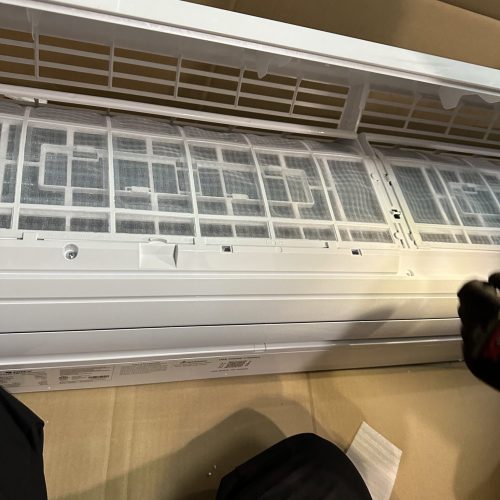
In the world of keeping homes comfortable, there have been many new steps forward in how we can heat and cool our spaces. One of the standout new options is the ductless mini-split system. This system is making a big wave for its ability to save space and efficiently manage the temperature in homes big and small. Let’s dive into what makes ductless mini-split systems so special and why more people are choosing them for their homes.
Getting to Know Ductless Mini-Split Systems:
A ductless mini-split system has an outside compressor that connects to one or more inside units that handle the air, all linked with refrigerant lines. Unlike the old way of using ducts to move conditioned air, these systems send air right to specific rooms or areas. This means you can control the temperature very accurately.
Why They Save So Much Space:
A big plus of the ductless mini-split system is how little room it needs. Old-school systems need a lot of ducts, which take up too much space in attics, basements, or closets. The newer systems are more compact and just need a small hole in the wall to join the inside and outside units. This is perfect for houses that don’t have a lot of extra room or for adding to parts of the house where putting in ducts would be too hard or expensive.
Being Able to Control Different Zones:
One of the coolest parts about ductless mini-split systems is how they let you control the temperature in different areas independently. Each inside unit works on its own, so you can set the temperature room by room to your liking. This means not wasting energy on heating or cooling places no one is using and can save money and make your home more comfortable.
How They’re Better for Your Bills:
Ductless mini-split systems are very good at saving energy. They have special compressors and can change how fast they run instead of just turning on and off. This keeps your home at a more consistent temperature and doesn’t use as much energy, which is better for your bills.
Easy to Put In:
Putting in a ductless mini-split system is also simpler than the old ways. Without the need for ducts, it’s less of a hassle and can be done quicker. Plus, there are more choices for where you can put the inside units, like on walls, ceilings, or even tucked away for a cleaner look.
Breathing Easier:
Lastly, these systems can help make the air in your house cleaner. They have filters that capture dust, things that cause allergies, and other stuff floating in the air.
Through these points, it’s clear why ductless mini-split systems are gaining traction among homeowners who want a modern, efficient way to control their home’s climate. Using these systems can make the air inside your home cleaner, which is great for people who have allergies or problems breathing. Plus, since each part of the system works on its own, there’s no chance of dirty air moving from one room to another. This means the air in your home stays cleaner. To wrap things up, ductless mini-split systems save space, use less energy, and let you control the temperature in different parts of your house. Because they’re small and flexible in where they can be put, these systems are changing how people keep their homes warm or cool. Whether you’re fixing up your current place or setting up a new one, these systems are a smart choice for managing your home’s temperature in a wallet-friendly way.

